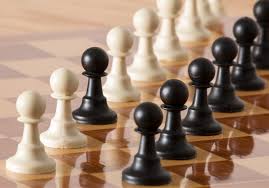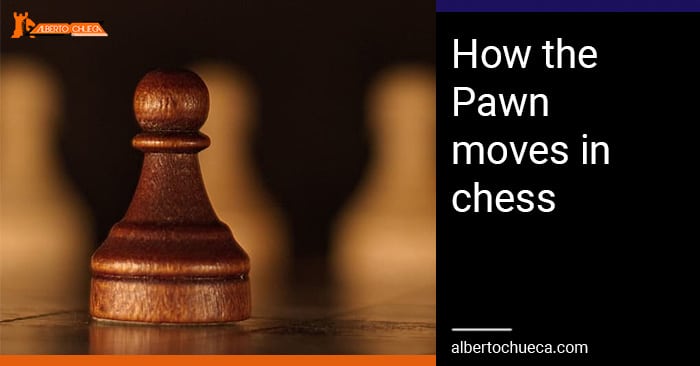Table of Contents
How does the pawn move in chess?
“Pawns are the souls of chess”. These were the words of Francois Andre Danican Philidor. The pawns are extremely mysterious pieces. They seem so non-valuable, yet they have great potential. So to learn how the pawn moves in chess, as well as key strategies that pertain to them, are critical.
Compared to the Queen (9), Rook (5), Knight/Bishop (3), the pawn is only worth one material point. Three pawns make the value of a Knight. However, as we will delve into later, the pawns have far greater potential than what they are worth. This is because if/when a pawn reaches the end of the board, it turns into a Queen! So the pawn is, therefore, more valuable the closer it is to promotion… or is it? Do keep in mind if a pawn is too far advanced, it can be weak, rounded up, and simply taken. Beginners often have an impulse to push their pawns down the board from the get-go. Patience is key in chess!
How the chess pawn looks

As we can see above, the chess pawn does not have much of a glamour look to it. It can vary depending on the type of chess piece. It's just a simple figure, generally with a round “head”. That figure represents the lack of mobility and power the pawn possesses on the board. However, as we will look into later, those little peasants can turn into little devils.
The chess pawn's starting position
As you may or may not have known, the pawns start as a flock. There are not one or two of them like other chess pieces. The chess position starts with eight(!) pawns for each side… meaning the chessboard consists of 16 pawns! As there are 64 squares, the 16 pawns, in the beginning, consist of 25% of the chessboard from the start. No wonder pawns are the souls of chess! So how the pawn moves in chess (which is not very functioning) kind of evens out.

With that said, what you may notice is that the main pieces (King, Queen, Bishops, and Knights) all start on the back rank in their proper order (unless of course, it is chess 960!). The pawns simply stand in front of each major piece.
You can see, each piece in the back row has a pawn right in front of it.
How the chess pawn moves
The functioning of the pawns are quite simple but can be confusing. On the pawn's first move, it has the option to move one space, or two spaces forward. However, once the pawn has moved, whether it be one or two spaces, it is only permitted to move one space for the duration of the game.
In the example above, we see a fairly common opening called the French Defense, and we can also see each side exercising their rights with the pawns. White moves the e-pawn up two spaces, Black moves their e-pawn up one space.
One element of how pawns move are the captures. This is different. Pawns do not capture in a straight line like they move, pawns capture diagonally.
As we can see above, the pawn on d5 is allowed to capture the pawn on e6. He is NOT allowed to capture the pawn on d6. Why do those rules exist? I did not make up the rules, those were the rules given to me!
Special rule: En Passant
How the pawn moves in chess can be so complex! This special chess rule is so unique and confusing that we are devoting an entire section to capturing En Passant. Some beginners cannot wrap their heads around that! With that said, En Passant is the following: When an enemy pawn moves two squares forward and lands right next to your pawn, you have the option to capture that pawn upwards diagonally towards the pawn.
You can see a schematic example here. The pawn on c7 is on its starting square and can move to c5. As you can see, the pawn started on c7, moved 2 squares to c5, and landed right next to the pawn on b5. The pawn on b5 can capture upwards in a diagonal manner, landing on c6.
Pawn Promotion

The last special rule we need to discuss how the pawn moves in chess is pawn promotion. In a nutshell, pawn promotion is that if the pawn reaches the end of the board (8th rank for White, 1st rank for Black), it has the option to turn into a Queen. It also has the ability to turn into a Knight, Bishop, or Rook, but 99% of the time it turns into the most valuable piece possible.
The position below may seem equal at first sight. Each side only has a King and pawn each. However, White is winning because his pawn is only 2 squares towards promotion, while Black's pawn is 6 squares to promotion. White will make a Queen and win the game with the extra material. If you think how the pawn moves in chess, every step it takes is one more to promotion.







2 Responses
It should be noted that en passant capture can happen only on the very next move after the two-rank move of the pawn being captured. The right to en passant capture expires if not taken advantage of immediately.
That’s true! Let me update the article :)